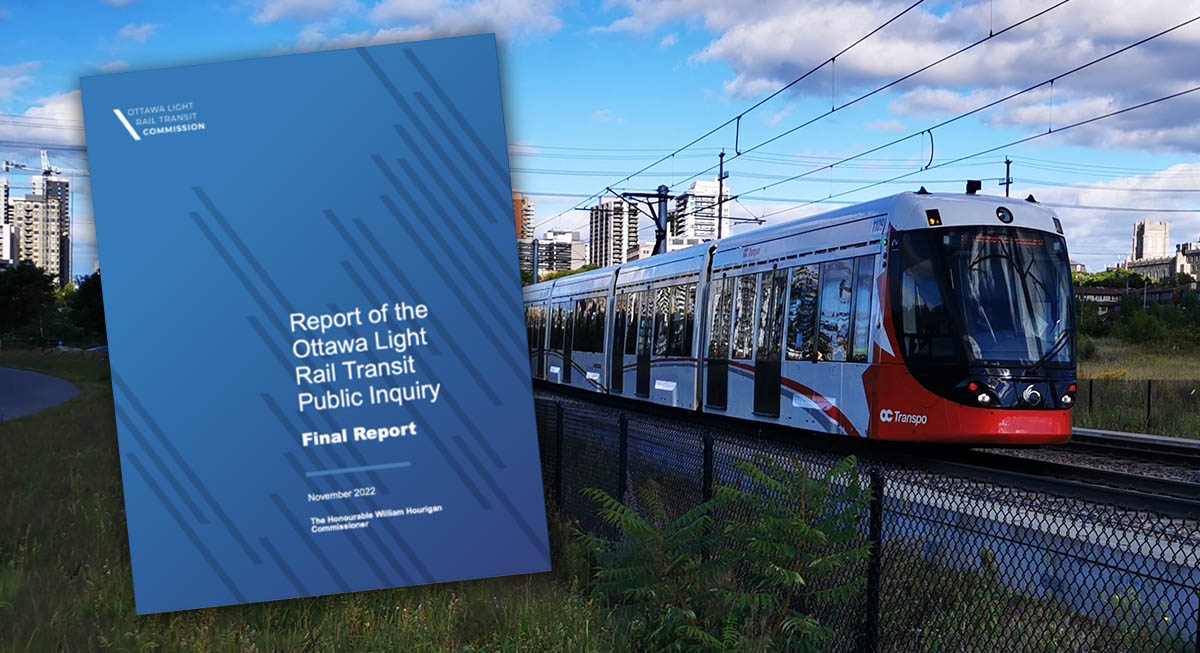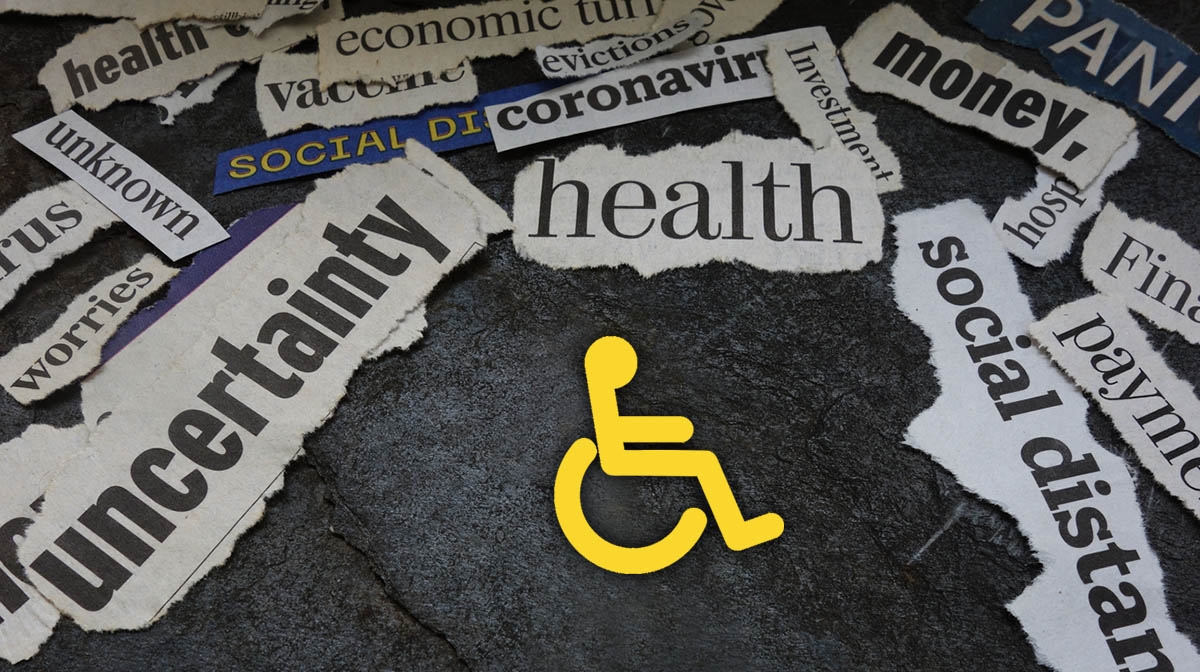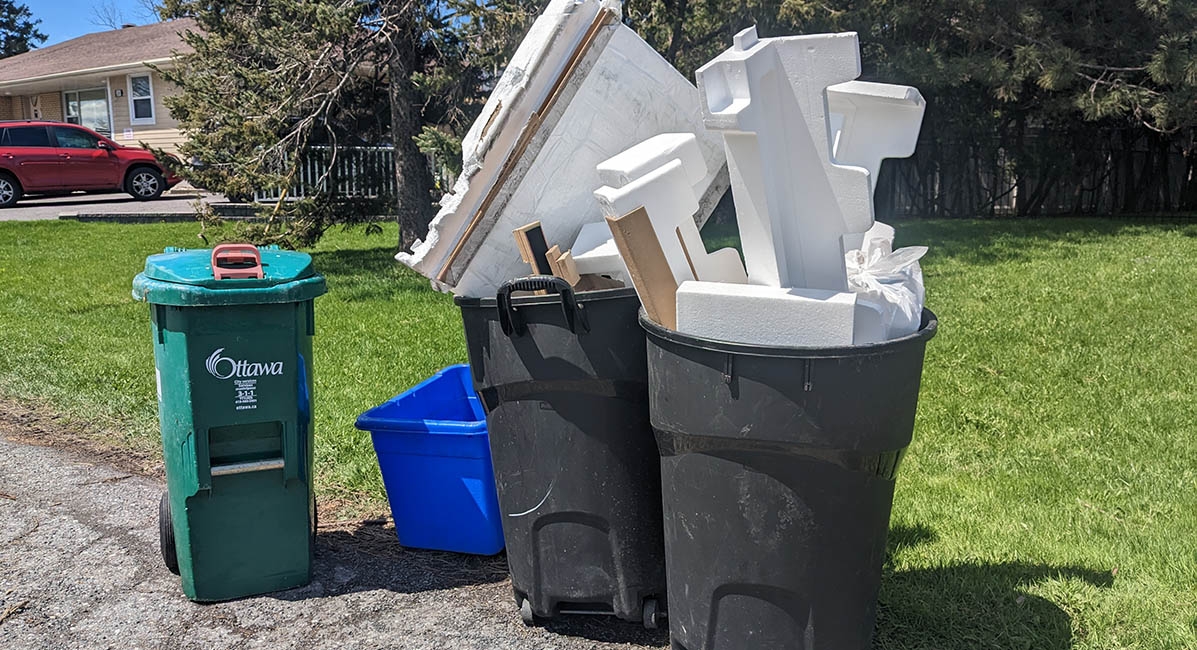
Public inquiry finds O-Train was a colossal failure of competency by city officials & Council.
The Ottawa LRT Public Inquiry has found there were persistent failures in leadership, partnership, and communications in the construction and maintenance of the Ottawa LRT. Commission Justice William Hourigan released the Inquiry’s final report today in Ottawa. “Our mandate,” he said, “was to find out for the residents of Ottawa what happened and why, and how to avoid similar problems in the future.”
In releasing the report, Commissioner Hourigan said both the City of Ottawa and the private consortium, Rideau Transit Group (RTG), lost sight of the public interest during the project. “It was unconscionable that RTG and its main sub-contractor knowingly gave the city inaccurate information about when they would finish building the LRT.” He also found that the City Council was not told that the testing criteria for the LRT was lowered to allow it to pass its final testing phase. “This conduct irreparably compromised the legal oversight ability of Council and raises serious concerns about whether the City of Ottawa can properly complete significant infrastructure projects.”
The Commissioner found there were many reasons Ottawa residents did not get the reliable transit system they deserved, including that:
- The City chose unproven technology for the trains that strained the limits of what an LRT system could do.
- RTG did not coordinate the work of its subcontractors and failed to ensure the integration of the various systems and components.
- An adversarial relationship developed between the City and RTG.
- The City rushed the LRT system into service before it was ready.
- RTG and its subcontractors did not provide adequate maintenance.
The Public Inquiry made 103 recommendations to fix the problems with the Ottawa LRT and ensure they do not recur on other major infrastructure projects. Commissioner Hourigan recommended that an independent monitor keep Ottawa City Council, or the Transit Commission, informed about ongoing corrective measures. And he said governments and public procurement agencies should examine whether to use a public-private partnership (P3) or another model when building complex infrastructure projects.
Other recommendations include the following:
- Collaboration and the public interest should be at the heart of the relationship between the public entity and private-sector partners.
- Systems integration must be prioritized from the design phase through to construction and manufacturing.
- Safety requirements should be designed and built in from the outset to avoid expensive, retroactive changes. An independent safety auditor should be engaged early in the construction of complex infrastructure projects.
- Reliability and safety issues must be honestly identified and communicated to project partners and the public. The province should give legal protection to whistleblowers who bring forward concerns about major infrastructure projects.
- Trial testing requirements should be detailed in the relevant contracts and used as the basis for any performance scoring.
- There should be timely and proper responses to problems related to maintenance and operations by all parties once they arise. The safety and needs of the public should be prioritized.
- Prior to public opening, there should be an extensive running of the entire system under conditions designed to mirror those of public service.
“More than three years after opening,” said Commissioner Hourigan, “some of the LRT’s problems still have not been fixed. While relations between the City and RTG have improved, both need to do more work to ensure the public interest is at the core of everything they do.”
The full Ottawa LRT Public Inquiry report at can be found at OttawaLRTPublicInquiry.ca
PHOTO: OLM Staff












